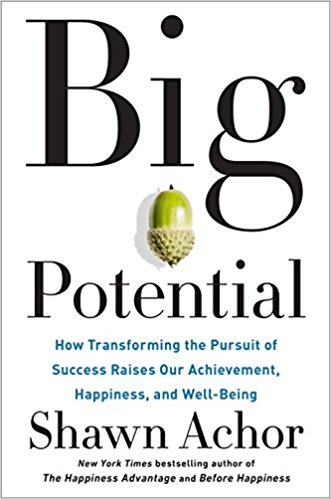Michal Stawicki's Blog, page 13
October 20, 2018
3 Simple Habits to Change Your Personality for Good
Your personality is the conglomerate of your habits because your habits shape you into who you are.
Thus, to transform your personality, you need keystone habits – the habits that beget the creation of more good habits without much effort.
“Keystone habits are habits that have a multiplier or a domino effect in your life.” — Brian Tracy
How do keystone habits provide this domino effect? By providing more good habits without friction.
Usually, developing a new habit is a hurdle with a doubtful outcome. You need to pay attention to your new behavior, cultivate it, track it, you fail, and you get frustrated… A keystone habit eliminates 90% of this cycle
You simply feel like trying something new and you do it without much conscious effort.
There are two keystone habits known to science. They were enumerated in the book “The Power of Habit:”
1. Exercise.
The power of exercise is not solely in better health, performance and energy levels. I say these things are just by-products of exercising.
Six years after going back to my pushups I finally decided to get serious about my weight. I changed my diet. I lost several pounds.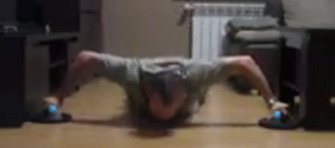
My years-long exercise discipline taught me the value of perseverance on a truly gut level. When I read The Slight Edge by Jeff Olson, the book that argues that perseverance is a foundation of any results and can catapult you to a great level of success, the message immediately clicked in my head.
Despite the fact I hadn’t pursued any personal development for 16 years, I decided to try Jeff’s approach.
The rest is history. I found my purpose, my reasons to live. I developed dozens of good habits. I rebuilt my life.
2. Healthy Eating.
Scientists are trying to find the perfect diet to fight off those diseases by eliminating different kinds of food: sugar; fat; dairy, etc. They generally overlook, however, the fact that there are societies that are free from those diseases and yet still consume a lot of sugar, fats, dairy, and meat. But those societies consume these in their natural form, not processed.
A straightforward conclusion can be drawn here: you can eat a reasonable amount of dairy products or high-fat foods, which in themselves give nutrition, but not processed foods containing these nutritious elements. When we eat processed food, we’re consuming the results of an artificial food production process, which is more difficult for our bodies to absorb.
I know people on Paleo diet and on vegan diets who thrive. There is no single diet appropriate for all. People vary on anatomic levels. Japanese cannot eat the exact same things European eats.
Eat as much of natural foods as you can. The simple rule of thumb to discern between natural and processed food is: was this food you are going to eat living somewhere a few days ago? You know, apples grow on trees, pizzas don’t.
The third habit has the power to transform your personality as well.
In this podcast episode, Shawn Achor, the author of “Happiness Advantage” tells about an astounding experiment. A 4-year kid with a pessimism gene was being asked for one month each morning about three new things he was grateful for. It made him a hardcore optimist for the rest of his life.
Wow! Now brace yourself, they did the same with an 84-year-old guy who had the same gene. The same thing happened.
Gratitude is a powerful force. Practicing it just a few minutes a day can rewire your brain.
I didn’t do genetic tests on me, but I suspect I have this gene too. Before reading ‘The Slight Edge’, I was a gloomy guy. After listening to ‘The Compound Effect’ by Darren Hardy, I started a gratitude diary about my wife. I wrote down just one to three things every day describing what I admired in her, what had she done for the family that day or even how pretty she is.
A habit of gratitude is the easiest on Earth to cultivate. Little I had thought about that journal. It was such a tiny thing, but it started a gratitude avalanche in my life. Today I keep three gratitude diaries – one about my wife, one about my kids and one “general purpose” diary. Each day I jot down from 15 to as many entries as I can fit into a page.
You can become a gratitude fountain in no time and reprogram your brain to positivity. Each morning write three new things you are grateful for.
The post 3 Simple Habits to Change Your Personality for Good appeared first on ExpandBeyondYourself.
October 10, 2018
Sixty Fourth Income Report – July 2018 ($2625.96)
Are you curious about a 3-month delay? I explained it in my first income report.
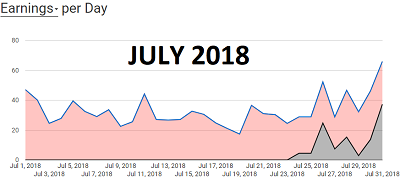 Vacations got me without really me noticing it. July was the first full month of vacations for my kids. My wife was working from home, so I was the only one who was leaving home to go to work.
Vacations got me without really me noticing it. July was the first full month of vacations for my kids. My wife was working from home, so I was the only one who was leaving home to go to work.Luckily for me, everybody in my household sleeps late. I had my mornings for me. But I didn’t manage to do much. I was going to bed late, so I was waking up late, about 7 am. Usually, I only had time for my morning ritual, writing, posting on Quora, and checking my sales from the previous day.
Everything else – creating ads and orders for them, exchanging messages with customers and prospects, and so on – I did on the trains to work or in the evenings. That was not a good productivity formula. I remember when, in the middle of the month, I sat down and wrote all the names of people I needed to contact. I owed a reply to some for more than a couple of weeks!
Family Time
On the other hand, I spent more time with my kids and wife. We went to a cinema almost every week. We had a barbecue a few times and it was my responsibility to grill the stuff.
And we watched practically every game of the soccer World Cup.
My wife and I visited my cousin, who has a genetically ill son. As heartbroken as it was to see the baby in his pitiful state, it was great to meet my cousin and give some support to him and his wife in person.
One Friday, the godfather of my eldest son visited us. I spent the whole afternoon sitting on our porch and chatting.
Household Issues
In July, we finally connected our home to the county’s sewage system. It involved some of my time, not much, but the interruptions in my morning time were annoying.
My wife’s 21-year old Nissan Micra finally decided to retire. The nearest repair shop staff tried to bring new life to it to no avail. I was acting as a bridge between my wife and car mechanic all this time. And I was her driver too, whenever she needed to go to town.
Then, I spent four or five days on buying a new car for her – searching through the offers, examining cars, making an actual purchase, and doing the paperwork.
As I said, it didn’t help my business performance, but it was nice to have this kind of flexibility and actually be able to do all those additional things and still have time for business as usual.
Selling a Kid into Slavery
One more family activity I did was bringing my kids, one at a time, to my day job. My director helped me circumnavigate some ridiculous corpo rules and smuggle my kids into the office.
When my eldest son visited the office, my crazy supervisor asked if he would be interested in working here. He really wasn’t, but my wife talked him into it. He went for an interview and my supervisor was impressed by his performance at logical tests. He got hired. He is 17 years old and got a job in the IT department of one of the four biggest consulting corporations in the world. Wow.
Day Job
Speaking about my day job, it left its marks too. I remember one Saturday when my actions caused troubles in the client’s production database. There was a rookie on standby, and I felt obligated to help him out. I spent half of that Saturday fixing the problem.
This month was also moderately busy in my day job, so it took its toll on me.
Resurrecting Books
Remember the backlog of people I should’ve contacted? Most of them were prospects for my book advertising service. Luckily, I implemented a tactic invented by my marketing coach and had a new website and new funnel in place. I didn’t need to contact every single of my prospects. It significantly decreased my workload.
However, I got at least several leads from referrals and I had to answer to those people. BTW, lately, a significant number of my customers came from referrals. My satisfied customers and friends recommend my service to their friends whenever they hear a complaint about low book sales.
Show Up Principle
It all comes from showing up. I’m not a newbie in the self-publishing industry. Authors hear about me often.
In July I got two new customers straight from my April income report. A couple of authors who read the report inquired about my service. One of them was on the fence for more than six months!
I earned over $300 with the two of them in July and will probably earn thousands in the future. Writing those income reports was fun, but also a LOT of work. Now, after four long years, I’m reaping the fruits of my hard work.
Writing
I wrote some book reviews and some Quora answers in July. But most importantly, I wrote…
New Book!
I finished the first draft of my book about self-talk, code name: Self-talk 
September 30, 2018
The 1-Page Marketing Plan Book Review
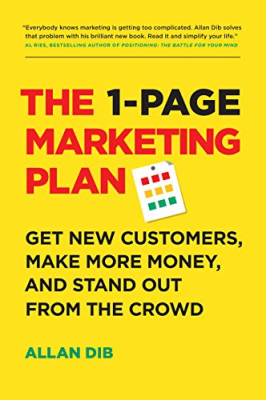 This book is brilliant.
This book is brilliant.
I cannot decide what I loved most about it – whether it was the superb conversational tone, amazingly solid business advice or that Allan actually preaches what he practices (which happens depressingly rare nowadays).
Are there any flaws in “The 1-Page Marketing Plan?” Only perceived ones and only a few. Let’s start with them.
Cons
1. Give them what they want…
The author tricks you into buying the book with his 1-page slogan. And he provides that indeed. But it’s just the tip of the tip of the iceberg. You get the tip and the whole iceberg attached to it.
…then give them what they need.
And it’s a huge iceberg to swallow. The amount of content condensed into this book is mind-blowing.
2. More for Rookies.
This book is ideal for people who are getting their feet wet in the entrepreneurial world. I found only a couple missing elements in the whole structure of Allan’s business program. But it also means that if you have some experience in business you have probably heard of or lived through most of the advice provided in the book.
On the plus side, Allan has a talent for conveying his points in a way that penetrates thick skulls. So, even if it’s something you are familiar with it still may make you take action.
3. Missing puzzles.
What small business owners need is a full operation manual for their businesses and the author provides just that. With two exceptions I could put my finger on: there is nothing, or very little, about a vision for your business and idea validation at its early stages. Yeah, I know, it’s nitpicking. 1-page Marketing Plan is dedicated to existing business owners and assumes they have a vision and validated their idea. However, if you cover the whole picture, you shouldn’t make exceptions.
Pros
1. From Practice.
I cannot praise the author enough for his book marketing. I make a living as a book advertiser. Gosh! So many authors, even business book authors, have no clue about it. I need to teach them basics before we can even start.
Allan Dib is a superb marketer. His book is #1 in a competitive category and it ranks high consistently, meaning he knows how to actually sell his own book.
The same experience shines through the pages of his book. Allan has been there and done that. “The 1-Page Marketing Plan” is not a theoretical thesis. It comes straight from experience. I appreciate this very much.
2. Advice
As I mentioned in the ‘Cons’ section, Allan shares much more than a single marketing tactic. His business advice is rock solid and truly comprehensive. It is also up to date like a few business books are. For example, the utmost emphasis on tracking your marketing campaigns is, of course, common sense, but in the modern world it is also a must.
“Half the money I spend on advertising is wasted; the trouble is I don’t know which half.” – John Wanamaker
“It should be a crime to say that today.” – Allan Dib
Allan is not shy about admitting that he borrows heavily from Gerber and his “E-Myth.” If you want to build a real business, not just a new job without a boss (and without a stable salary), you need systems and processes. Your marketing needs a system and processes as well and “The 1-Page Marketing Plan” tells you exactly how to implement them.
The business advice shared in the book is especially valuable for business rookies who haven’t yet read everything from the business shelf in the library.
3. Wisdom.
Allan Dib’s advice does not focus only on systems and processes. His business acumen is enormous and he is generous in sharing it. For me, it was especially visible when he talks about relationships with customers. I need to nurture those relationships not consider them a given. Allan also knows which particular stories to share to make his point memorable. The story of a car salesman opened my eyes to what it means to keep relationships with customers alive.
“Everybody is in sales” was another business wisdom nugget I got from “The 1-Page Marketing Plan.”
And author’s assessment about big organizations was right on the spot:
“Poor service, indifferent staff, and out-of-touch management are hallmarks of large companies.”
I’ve been working in a corporate environment my whole career and there are no words that describe this world more aptly.
I also liked very much whenever Allan gave arguments about why small businesses actually have advantage over big corporations, if they do their marketing right.
Another of his gems:
“Word of mouth is the business equivalent of a free lunch.”
That’s so true. It’s amazing when it happens, but depending on free meals is not a strategy to support your family or create a business.
Firing problematic customers, not basing your business on a single snow leopard, how to give outrageous guarantees and many other wisdom gems were hidden among this book’s pages.
4. Storytelling.
While many of the things Allan teaches about in his book were not new to me, his storytelling is so superb that many things I knew only intellectually finally penetrated to the gut level.
For example, I knew very well that it’s so much more effective to keep an existing customer than to attract a new one. They taught me this in my economy classes at university 20 years ago! But only after reading the “The 1-Page Marketing Plan” it dawned on me how downright stupid it is to neglect your past and existing customers and chase new clients instead.
I’m a numbers guy and I was impressed at how Allan used numbers to illustrate his points.
Thus, even if you “kind of” already know everything about marketing, systems, processes and keeping your customers satisfied, reading “The 1-Page Marketing Plan” will not be waste of your time. The author’s persuasion skills may refresh your knowledge and implement what you know intellectually into practice.
5. 1-Page
And yes, there is a 1-page marketing plan included in the book.
In my opinion, it’s well worth the book’s price. Even the principle that you should have only one place, one sheet, to picture your whole marketing plan with a single glance is worth the price. We are so distracted in the modern world. This single piece may serve you as a single point of focus that will keep your monkey brain glued to the importance of marketing plan for your business.
So, even if you already know everything Allan teaches about marketing, customer satisfaction, market research, systems and processes and all that stuff, but you didn’t have your whole marketing plan put on a single sheet, you need to read “The 1-Page Marketing Plan”
By the way, the plan is thoroughly well-laid out in a chronological and logical order. It’s a masterpiece. I’m going to use it in my business.
The post The 1-Page Marketing Plan Book Review appeared first on ExpandBeyondYourself.
September 20, 2018
How Long Does It REALLY Take to Improve Your Life?
 Changing one’s life is a lengthy process. We are so impatient. We dream about overnight success or a one-week life change. Somehow, it’s so easy to forget that your lifespan is measured in decades. One night or one week is only a tiny fraction of your life.
Changing one’s life is a lengthy process. We are so impatient. We dream about overnight success or a one-week life change. Somehow, it’s so easy to forget that your lifespan is measured in decades. One night or one week is only a tiny fraction of your life.
So how long does it really take to improve your life?
The results vary, as they say. They are three known methods to change one’s behavior:
-an epiphany
-a change of environment (what surrounds you)
-a change of habits
Here comes the triple discovery about epiphanies:
An epiphany changes human life the most quickly, sometimes in a heartbeat or within a few minutes.
Epiphany stories get an insanely disproportionate amount of media coverage.
An epiphany is impossible to engineer.
I’m sure you’ve heard of the stories of grandparents who dramatically changed their lifestyle and improved their health because their sweet little grandkids told them not to die too soon. Or the stories of addicts who met Jesus. Or stories of people who had a near-death experience and came out of that totally different.
A moment of decision, one short event and they turned their lives around.
I’m sure you’ve heard such stories because they got extremely heavy media coverage. They draw attention. They spark interest. They sell. Thus, just about every single “epiphany story” is covered. They are a no-brainer for media outlets.
And it tricks you into thinking that an epiphany is a way to improve your life.
It’s not.
The one thing the media doesn’t mention when covering those stories is that every single time an epiphany is happening TO the person. Nobody has ever engineered an epiphany. It’s impossible.
In my opinion, it takes a higher power to create an epiphany. For materialists, it takes an absolutely complex, random set of circumstances to make an epiphany happen. You know, almost as the complex set of circumstances, as a completely random creation of the universe with a myriad of metrics and laws that make a human life in this universe possible.
Anyway, you cannot create an epiphany. You can only hope it will happen to you one day. And it’s a poor strategy for taking control of your life.
A change of environment can be relatively fast. For example, you move to another country to get a new job and your life accelerates like crazy. Or you get married, move out of your parents’ house and start a family. Or you get pregnant and your pregnancy motivates you to improve your life in a way that has always eluded you.
The triple discovery about the change of environment:
It’s not easy to engineer either.
Your mindset always stands in the way.
Hence, it doesn’t happen as often as we tend to think.
How often do you change a job, move to another city/country, or get married or pregnant for the first time in your life? Much more often than experiencing an epiphany, but still not very often, right?
Such major life shifts have also a tendency to happen to us. I changed jobs because I was fired. Our first kid wasn’t planned. Ha, ha, nor either of the two following kids.
Here is the thing: the longer you live, the harder is to introduce a significant change of environment. When I decided to improve my life at the age of 33, I had been married for 12 years, had three kids, a 35-year mortgage and a full-time job. I simply could not leave my old life behind.
People get married, have kids and change jobs all the time, and a life change does not follow those events. Why? Because no matter how your environment changes, you take your old mentality with you every time. Your personal philosophy is the same and it only MAY shift in new circumstances.
But one of our internal brain mechanisms is RAS that filters out everything around and provides to your conscious mind only a deliberately curated ‘press releases’ of reality. In other words, you are always looking for facts and arguments that confirm your existing philosophy. And you don’t change much.
Hence, the significant improvement of life as a result of changing what surrounds you is not common. It happens, but it doesn’t happen every time.
Change of Habits
On the other hand, if you follow the route #3 – changing your habits – it happens every time. In his book, “The Power of Habit,” Charles Duhigg tells a story of some research. Scientists were interested in the reason behind changing one’s life… Some people are able to improve their lives and others aren’t? What’s the factor that explains it? What’s the first cause?
They started with normal bias, they were looking for tracks of enlightenment or change of surroundings. They thought that a sudden conversion, death in a family or some other tragedy may be good explanations for the change in human behavior. They interviewed people who were able to bring their lives back on track and they were amazed by the discovery of the first cause.
It was a change in habits. In fact, often it was a single new habit that started the avalanche of improvement.
What I conclude is that routes #1 and #2 are only shortcuts to changing one’s habits. If you convert because of enlightenment and join a religious order your daily life is much different from it was. If you move to another country, you lose many of your old habit triggers and it creates space for building new habits.
An enlightenment and the change in your surroundings don’t change your life directly; they change your life because they lead you to change your habits, thus the improvement of your life.
And changing your habits takes months, not days. Developing a single habit takes more than a couple of months on average. That is, according to the only widely quoted study from the European Journal of Psychology about this subject. I think this study is overly optimistic because it was skewed toward success in laboratory conditions. In a real life, it takes even longer.
And yes, a single habit. Every expert says that it’s exponentially easier to develop one habit at a time than two.
Conclusion: you need at least a few months to improve your life.
Of course, assuming your new habit has the life-changing capacity. It is one thing to start a private journal and write for five minutes a day, and another to start writing a book for two hours a day and then actually publish it.
Usually, a single habit is not as influential and you need a synergy of several habits to convert it into a significant improvement of your life.
How long does it REALLY take to improve your life?
Exercise is a keystone habit, one of the two discovered by scientists looking for the first cause of permanent change in an individual’s behavior. A keystone habit is a habit that leads to a cascade of other positive actions. In other words, it leads you to develop more good habits, even without your conscious decision and seemingly without all the effort connoted with developing a new discipline. Brian Tracy explained it most aptly:
“Keystone habits are habits that have a multiplier or a domino effect in your life.”
If your intention is not set at the improvement of your whole life and if the scope of the habit is short of life-changing capacity, even introducing a keystone habit won’t help you improve your life fast.
It took me about seven years.
In 2006 I returned to my habit of doing a single consecutive series of pushups to the point of failure. I just wanted to lose some weight.
Exercising was still a keystone habit and I developed more good habits without conscious reflection or much effort. In a few months, I coupled my morning workout with my morning prayer and that solidified both of the disciplines.
A few years down the road I started using to-do lists and checklists to subdue the chaos of my daily responsibilities. I bought a pull-up bar and started doing pullups and chin-ups almost on everyday basis. At the beginning of 2012, I finally modified my diet into something healthier than the donuts I was so fond of.
So I got 3-4 new good habits thanks to my exercise habit. They emerged spontaneously, exactly like a keystone habit works.
The Improvement Process
But it took me six long years to arrive at this level. It also prepared me for the message of The Slight Edge. You see, I always thought success was something grand, thus out of my reach. In his book, Jeff Olson explained that success is a few simple disciplines repeated over time.
I was skeptical like hell, but I had a few experiences from my own life when I followed some small disciplines and succeeded. The most prominent and fresh one was my pushups habit. I didn’t lose weight, but my strength increased. My performance climbed over 300% in those six years. This experience made me think that maybe Olson wasn’t a self-help idiot guru and maybe I can succeed in my life.
A year later, in August 2013, I had dozens of new daily habits and I started a new career; I became a writer.
It took me seven years since starting my first habit to get out of the life of a quiet desperation and actually doing something to improve my life.
That’s LONG! But still only 18% of my lifespan as of today.
And it took me FIVE more years to truly improve my life, not only myself.
In the last five years I beat hundreds of fitness records, published 13 books, bought our first home, started an online coaching practice, passed a few exams and obtained a few professional certificates, wrote over 1,750,000 words, doubled my income, published over 1,000 answers on Quora, sold tens of thousand copies of my books, changed a job, started a book advertising business, downsized my job to halftime… My life not only improved, it exploded.
However, a few most impactful things from the above list happened in the last TWO years and the most significant ones – downsizing my day job and the success of my Resurrecting Books service – happened in the last year.
And let us never slacken in doing good; for if we do not give up, we shall have our harvest in due time.
– Galatians 6: 9
It took me so much time to get where I am now. The journey was exhausting. If someone told me in 2006 that it would take me the next twelve years to “arrive” where I want to be, I don’t think I would have decided to go through this process.
I remember how discouraged I was just two years ago. I had been on this journey for four years and it seemed like my efforts barely brought any fruits. I was stuck in my day job. My book sales dwindled to about 250 copies a month. My marriage was in shambles. I was out of steam. I had to draw from my salary to pay for the services needed for my side hustle. My bank account balance didn’t bring optimism.
Four fricking years of hustling like crazy for very little reward.
But I didn’t stop.
So how long does it take to improve your life?
Your whole life. This process never ends. If you want true satisfaction from life, you need to keep progressing. You will never “arrive.”
Say farewell to the illusion that you will ever be fully content with your life. Nope. The whole joy comes from improving, not from improvements. Life is a process, not a destination.
Accept that it will take years or decades to improve your life. It’s normal. Stories of overnight success are abnormal. They are carefully curated in media so the long journey seems like overnight success or they are simple aberrations.
Don’t aim for overnight or overweek success. Overdecade success is much more likely, doable, durable, lasting, and frankly – more enjoyable.
Change takes time. Suck it up. Keep going.
The post How Long Does It REALLY Take to Improve Your Life? appeared first on ExpandBeyondYourself.
September 10, 2018
Sixty Third Income Report – June 2018 ($3354.6)
Are you curious about a 3-month delay? I explained it in my first income report.
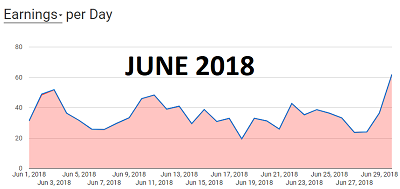 June 2018 was full of hustle. Some of it was a smart hustle. I finished the email sequence for my Resurrecting Books service and could finally catch a breath without constant email bombardment from prospects.
June 2018 was full of hustle. Some of it was a smart hustle. I finished the email sequence for my Resurrecting Books service and could finally catch a breath without constant email bombardment from prospects.
It didn’t mean I had no inquiries. If I recall correctly, I got two new customers in June. But my email sequence dealt with all the potential clients who weren’t a good fit, and I interacted only with those who I was interested in working with. This was my marketing coach’s genius idea.
Keywords…
I got the first batch of keywords from my Indian partner. He sent me over 30,000 words and I distilled them to about 16,000 unique words. That meant 16 new keyword sets for tests.
I also downloaded all the keyword data from UK reports and recreated ads for my books and my two biggest customers. It worked. Amazon says it’s better to run ads for a long time, so their algorithms recognize which keywords work well, blah, blah, blah…
It’s BS.
It’s better to run new ads every month. Amazon does so much testing at the launch of an ad, that it gets a high volume of impressions, thus clicks and sales.
If I don’t reload ads, my sales are cut in half the next month. If I do reload them, I can sustain the stable level of sales.
And Ads…
My sales dwindled to about 10-15 copies a day in the US. Some of my old ads were over a year old. I also reloaded ads for my books in the US and the effect was very similar.
I downloaded all the data from my past campaigns per each book and crunched them separately. I ended up with 12,000-22,000 decent keywords for each book and created a set of ads. My sales rebounded.
I was busy with creating new ads for my customers as well. “I,” ha, ha. It was mainly my son who was eager to earn enough to buy himself a gaming computer.
I hired my 11-year old daughter for the task of downloading campaigns data. It was a simple, but time-consuming work, which is ideal for her. She proudly cashed in her first ‘salary.’
Writing
I wrote mostly new Quora answers and an income report, of course. But I got back to my book about self-talk at the end of the month. The last five days of June I was writing only this book.
I ran out of new Quora answers, so whenever I had nothing new from my proofreader I used my old content to answer new questions. I maintained consistency and some of those answers got promoted by Quora. I doubled down on this strategy the next month when I focused on finishing the self-talk book.
BJ Fogg
On 8th of June I had about one-hour long call with BJ Fogg, the creator of Tiny Habits framework and a head of Persuasive Lab on Stanford University.
He is writing a book about Tiny Habits for a wide public and was collecting some tiny habits success stories. We had a wonderful conversation. I think I have a pretty good chance of appearing in another mainstream book 
August 31, 2018
“The Mindful Entrepreneur” Book Review
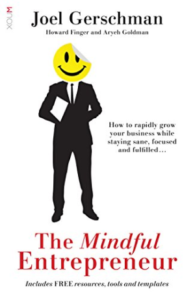
If you’ve read “E-myth” or “”Built to Sell,” you’ll want to read “The Mindful Entrepreneur.” This book is like an additional compendium book to those best-sellers; it fills the gap so they finally make sense.
Both those books discuss the purposeful organization of the business. “The Mindful Entrepreneur” talks about this, but also discusses personal mindfulness and how it relates to owning a business.
“First of all, your business isn’t a separate part of your life; it’s part of an integrated whole.”
I absolutely agree with this sentence from the book. My mentor hammered this lesson into me time after time. “It’s just a business” is an ugly myth. The string of broken marriages, nervous breakdowns and suicides caused by entrepreneurial pressure is long and widely publicized. It’s not just business. It’s your life and Joel Greschman makes an amazing job of explaining how you can integrate your business in your life and your personality into your business.
A Single Fly in the Ointment
The only tiny weakness in this super book is that there is too much “sugar” in it. At least, that was my impression.
The turnaround that Howard, the main character, experienced was so rapid and complete that it seemed he really didn’t struggle. His home life seemed almost idyllic. Everyone supported him and every improvement he tried to bring home was instantly accepted and made everyone at home happy.
But maybe Howard’s life is just sweet? I don’t know.
All the Goodness
I can’t properly highlight all the great features of this book. It’s just too awesome! I can only hope that a few things I describe will attract you to the book and you read it and enjoy all its facets.
1. Fiction Story that Works.
This book is a masterpiece. I’ve read hundreds of business and personal development books and not a single one came even close to this level of mingling the story with actionable steps.
For example, I read “Rich Dad, Poor Dad” and I hated its guts! The story was captivating and fascinating, the main theme was significant, but Kiyosaki ruined everything for me when I discovered that it was a fake story. A real-life story of such degree of impact would have been incredible. The fiction story was just that, fiction.
I felt the same when I read any other business/ personal development books which tried to use a fiction story to illustrate the main point. Sometimes authors used real cases in their books. 90% of the time it felt clumsy, sometimes downright embarrassing.
In “The Mindful Entrepreneur” Joel uses a real story and it really reads like a fiction book. You’ll want to flip the pages and find out how the story unfolds.
At the same time, the book is packed with resources, methods, big picture concepts and practical techniques that break the story into very manageable pieces and illustrate how to use them in real life.
This is the perfect mishmash of a story and charts, diagrams, detailed lists and action steps.
2. Mindfulness.
Life and business go hand in hand, but this simple fact eludes most of entrepreneurs. A business plan, systems and processes are not enough to move your business forward, if you are anxious and afraid of the future.
Fixing your business is half the work. You also need to fix yourself and Joel tell you exactly how, in the same way, he explains how you should improve your business: methodically and continually.
It’s so refreshing to see the same methodical approach applied to both life and business side of things. When the author of “The Mindful Entrepreneur” advises how to notice and correct your faulty thinking, he doesn’t stop at a pep talk. You get step by step action plans, detailed and applicable in the same way the book provides business advice. Those mindfulness techniques are also included in the storyline, so you can relate to them better. You see another human being struggling with the same demons you struggle with and how he face them and win them.
3. Habits.
One additional point about the mindfulness techniques Joel teaches in the book that I love: they all come down to a regular practice. You cannot change, if your habits won’t change. It’s not enough to check yourself once when stupid and dark thoughts attack you. You need disciplines and rituals to overcome them.
I’m a habit coach, so I appreciate the approach illustrated in “The Mindful Entrepreneur” very much. Whatever you try to incorporate into your life to improve yourself, you need to do it regularly. This applies to your physical health as well as to your mental and emotional health.
4. Resources.
I’m very impressed by the way the author presents all this awesome advice. It’s all actionable, put in a sensible order, clear and concise. “The Mindful Entrepreneur” is filled with diagrams and tables that illustrate the relevant points. You don’t need to guess or look for explanations from external sources. Everything is one place and makes sense.
I started by mentioning “E-myth” and “Built to Sell;” I read those books and I think “The Mindful Entrepreneur” is better than them when it comes to implementation. You simply can’t go wrong following the book’s guidelines. You won’t be confused or lost on what to do next. This is awesome!
5. Solid Business Advice.
Joel starts with the mission and vision for the business. It’s a different way of thinking for entrepreneurs when it comes to their day to day business activities. Businessmen care about the bottom line, not about visions!
Yet, it’s the best advice a small business owner can get. Companies that have a mission, vision and values incorporated into their daily functioning outrank their competition by over 10 times.
When you know your why, you will figure out your how and what without a problem. It applies to personal life as well as to professional life.
And it’s just a single example out of dozens. “The Mindful Entrepreneur” does it all the time. It teaches the right things in the right order, so you can stop putting out fires in your business and actually start enjoying being an entrepreneur.
6. Timespan.
Another thing I loved about this book is how it deals with the overnight success myth. It took Howard well over a year to fix his business. There are no magic potions that will change everything in your business next week.
What’s more, Howard’s business functioned in the market for 10 years before he met Joel. He capitalized on his whole rich experience, he didn’t create something from nothing. Because he had a business that worked for years, he could improve it.
This book is a gem. I can give you one more reference – “Work the System” by Sam Carpenter. Both books tell a story and teach how to convert a business from a chaotic endeavor into a profitable and reliable one.
Only Joel Greschman does it in 5 times fewer words. Don’t get me wrong, Sam’s story is still a powerful testimonial of the ordering power of systems. It can inspire you. But “The Mindful Entrepreneur” provides the tools you need to morph this inspiration into actionable steps.
If you apply what this book tells you, you won’t be an overnight success, but you will be a success.
It’s flatly impossible to list all the good points about this book. My final piece of advice is: if you already have a business, read this book to find out how to make it better; if you don’t have one, read it for the inspiring story.
The post “The Mindful Entrepreneur” Book Review appeared first on ExpandBeyondYourself.
August 20, 2018
How to Become Successful in Life?
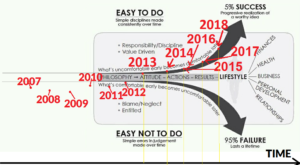 The dictionary definition of success is: the accomplishment of an aim or purpose.
The dictionary definition of success is: the accomplishment of an aim or purpose.
Which is bullshit. Accomplishing anything doesn’t make you a success. You must also enjoy getting there or you will be miserable 99% of the time. Then, you must be prepared to pay the price for success.
If a gold medal in gymnastics at Olympics is your goal, that’s great. But when your joints will be in pain for the last 5 decades of your life, your satisfaction of achieving that goal must overpower the pain, or you will be miserable.
My favorite definition of success is:
Success is nothing more than a few simple disciplines, practiced every day. – Jim Rohn
First, it makes you a success from day #1. If you put the first step on the path to your daily disciplines, you are already a success. And you are a success all the way to the final destination, including the final outcome.
Second, it makes success attainable for common mortals. I used to think that success was a gold medal at the Olympics or running a multimillion-dollar company. I was clearly unable to reach any of those goals so I didn’t even try. Thanks to Jim Rohn’s definition of success, I made an effort.
Third, it’s the most sterling way to actually “accomplish an aim or purpose.” Daily disciplines and habits spare you a lot of brainpower and decision making. You can utilize them in other areas of your life or to magnify your focus on your goal.
When you show up every day, you can’t help but improve. And you show up every day because you enjoy the process. It’s not too easy, it’s not too hard. Your skills and experience grow with every day of practice. You feel your progress.
If a runner starts a marathon, consistently put his feet in front of one another and heads in the right direction, he must reach the finish line eventually.
So, in summary – you can’t get success in life WITHOUT solid daily habits. I attest to that with the experiences I’ve had in the last six years of my life.
My Story
I was aimless and discouraged before I decided to give Jim Rohn’s definition of success a try.
We generally change ourselves for one of two reasons: inspiration or desperation. — Jim Rohn
I was motivated by desperation. I didn’t really believe that I could reach success by practicing daily habits, but no other avenue to success was available to me. So, one day I sat, wrote down several goals for all areas of my life (health, finance, relationships, spirituality and so on) and brainstormed 15 daily disciplines that could help me reach those goals.
Soon, I discarded five of those habits. They came from the wrong place or weren’t aligned with my values. I diligently practiced the remaining ten. Six of them are still part of my daily life.
After a month of practicing speed reading my reading speed almost doubled. That gave me an ounce of belief into this way of achieving success.
It has never let me down since then.
I lost excess weight, made new friends all over the world, became an author, bought a house, beat hundreds of personal fitness records, became a life coach, passed a few exams and got a couple professional certificates for my day job, overcame my shyness, wrote over 1.75 million words, published hundreds of articles online (on my blog, Quora, Medium, blogs and magazines), changed jobs (35% salary raise), sold tens of thousands copies of my books, started a book advertising business, my wife quit her job and I transitioned into half-time work.
And it’s just a tip of the iceberg.
And none of my initial daily disciplines took more than 10 minutes a day.
Your Story
Do you know what you want to accomplish in regard to your finances, health, spirituality, relationships, career, self-development, happiness? Great, write it down.
You don’t know? Reflect on your values and priorities and come up with something. Write it down.
Then brainstorm simple daily disciplines that will meet these criteria: What’s one simple, single, easy-to-do activity can you do, day in and day out, that will have the greatest impact to that outcome?
Write those disciplines down.
Execute them consistently.
Every. Single. Day.
You are a success.
The post How to Become Successful in Life? appeared first on ExpandBeyondYourself.
August 15, 2018
Sixty Second Income Report – May 2018 ($2630.52)
Are you curious about a 3-month delay? I explained it in my first income report.
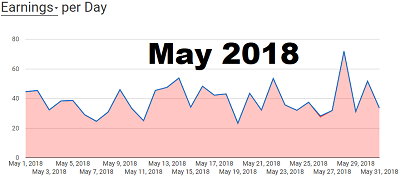 May 2018 started with a long holiday. The 1st and 3rd of May are free days in Poland and if you take a few days off between them, you can have a decent vacation for the price of a couple days of furlough.
May 2018 started with a long holiday. The 1st and 3rd of May are free days in Poland and if you take a few days off between them, you can have a decent vacation for the price of a couple days of furlough.I worked on 2nd of May, but the rest of the week I did what I pleased.
The first two days were busy with calculating my customers’ profits, issuing invoices for them and contacting them. This is the only kind of administrative work I like to do 
August 10, 2018
The Slight Edge Report Year Six
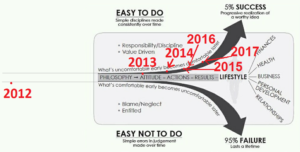 This is my yearly The Slight Edge report. I post such a report every year on the anniversary of reading this awesome book.
This is my yearly The Slight Edge report. I post such a report every year on the anniversary of reading this awesome book.
The last 12 months were unbelievable. I downsized my day job to a half-time gig. My wife quit her day job. I transformed a very fresh business idea into a solid 4-figure monthly venture. My son joined my church community. I joined a mastermind led by my favorite millionaire. I was in the USA for the first time in my life. I gave my first speaking gig – in English!
I always experience some dizziness when I look back at the last year, but this year was exceptionally crazy. It’s like a dream come true.
Career
I have so many occupations now. I’m still a database administrator, half-time. I’m an author. I’m a life coach. I’m a book marketing consultant. Each of those four occupations provides roughly 25% of our household income.
A lot has happened in the last 12 months in pretty much each of the areas.
Downsizing my day job was a huge blessing. My corporate gig was getting on my nerves and I was getting on the nerves of the whole team, starting with my supervisor. In fact, she was the one who initiated the downsizing process and opened the door for me.
Since the last report, my book sold 10,474 Kindle copies and 3,632 paperbacks. This is respectively 23% and 45% progress over the previous year. My free books were downloaded from Amazon almost 5,300 times.
Again, this was with no new releases at all and minimal promotional activity.
Coaching has been going well. I got two new Pay What It’s Worth coaching clients. One of them quit after two months, but he got back to me because he noticed how much he slacked without accountability. I had a whole bunch of new clients on Coach.me who appeared, stayed for a while, achieved their short-term goals and quit.
I also had a couple of unsettling adventures. I got a client with schizophrenia who needed help. That was a tough experience that demonstrated to me how unprepared I was. I can coach healthy, self-motivated adults in the areas I succeeded, but coaching someone who is mentally ill was a totally different story. I was kind of relieved when the Coach.me authorities stepped into and canceled her all coaching contracts.
Then, in April I got this annoying client who was not ready for the kind of coaching I do online. It’s more about accountability and daily actions than about looking for solutions and support. But she avoided every action and felt criticized by me because I insisted on creating the minimal action plan ASAP and implementing it. It lasted for a few weeks and it cost me some emotional turmoil. In the end, I decided to stop accepting new clients on Coach.me at the beginning of May 2018. I have been working steadily with my several paying clients since then and accepted only a couple new ones, including one by accident.
Resurrecting Books
My book advertising service took off like a rocket ship. The beginning was a bit rough, but I got new customers almost every month. The revenue steadily increased. Then, in October 2018 I had an eye-opening call with a marketing expert, implemented his advice in November and got a really good customer in December. “Really good” means that my revenue from AMS service doubled month-to-month.
Figuring out the mysterious secrets of AMS advertising has been a constant struggle and my ads’ performance has been getting worse and worse, but the revenue stayed at the 4-figure level since March, and March was only a slight hiccup, netting almost $900.
An event that really saved this service and my book sales was when Amazon opened the UK market for ads. On 26th of February I figured out how to open an AMS account in the UK and my sales in the UK simply exploded. For example, I sold 241 Kindle copies till the 28th of July and it is always a slow month. I mentioned the decreasing performance of my ads, 240 is not many compared to 840 in March 2018. But without the ads in the UK, I sold only 17 copies in August 2017.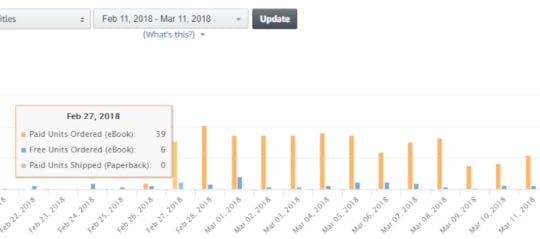
My sales in UK from 21st of Feb till 11th of Mar 2018
I got 5 of my best customers on that market and UK revenues make up about half of the business now.
I’ve served 30+ customers so far, advertised 60+ books and helped other authors earn about $30,000 dollars they wouldn’t have earned without my help. Unfortunately, AMS reporting is quite poor, so I have only a guesstimation of the number of copies we sold: over 10,000 copies.
And this business opened some new venues and provided opportunities for me. I contacted Martin Meadows and offered to run ads for him at no cost. Now we are in regular contact and I already learned priceless advice from him, like how to leverage Book Bub ads for a book launch.
When I was in the USA, a guy from my mastermind community let me stay at his place for no cost. I partly repaid my debt to him by resurrecting his book. It sold only several copies in 2017. Thanks to my ads it sold about 100 copies in the last three months.
By the way, I was the first author who figured out how to get into the UK market with AMS ads in the huge FB group dedicated to Amazon advertising. Thanks to them I knew it was possible because other authors shared stories about their friends who already advertised on that market. So, I only needed to figure out how to do that. Once I did, I shared my discovery with the group, plenty of people replicated the process and one guy documented it for group members.
My AMS business grew like it did, because I hired a pack of minions to help me out. My eldest son has helped me since autumn 2016. When my wife finally quit her day job for good, she learned how to download my customer’s daily data snapshots and create Amazon ads. Soon, I needed to teach my second son how to create ads. A few months ago, I even hired my 11-old daughter to download ads’ data for further analysis.
Because he started creating Amazon ads for me and my customers, my son was able to buy himself a new gaming computer.
My role came down to interacting with prospects, getting them on board, creating the first template ad for each new book and creating orders for more ads. Only occasionally did I dabble with anything else – ads creation, downloading data of my customers, managing particular ads and the like.
Thank God for minions. I had my hands full anyway. This business begot some unexpected opportunities. For example, I was hired to write four book descriptions for one of my prospects who didn’t finally work on ads with me. I also made a complete revamp of book pages for a few people. It required a high level of trust, because I needed the access to my customer’s Amazon account. I did it mostly for men from my mastermind, but also for one existing customer of Resurrecting Books.
After my visit to the USA in April I also got busy with revamping my Resurrecting Books website. I got priceless advice from Dave Chesson, the owner of Kindlepreneur and hired again the marketing coach. We not only rebuilt the website, but also the whole funnel. Before the new site was up, I had spent a lot of my time providing initial free assessments for my prospects. The sheer volume of prospects saturated my schedule (and inbox). The new process automated my feedback and I contact only those prospects I personally pick, because I see the biggest potential in their books.
While most of the times my service is nothing groundbreaking, and sometimes the advertised books barely break even, I love the cases when it makes all the difference. I love to see books that had 7-digit bestseller rank (meaning they sold a copy once in a blue moon) that are getting a consistent trickle of sales. In their cases, 10 sales a month is the difference between life and death. It is the true resurrection that justifies the name of my service.
A few times, the success stories were more impressive. The “good client” I got in December? He already paid me over $3,000, because my ads earned him twice as much. I got a new customer in July 2018. He had five books and none of them were selling decently. We sold 50 copies in the first two weeks of running his ads.
Tidbits
I got back on Quora in April for good. In the last year, Quora generated over a million views of my answers, pretty nice! I love Quora for what it is. I have a chance to engage with my readers, to get to know their pain points and I have material for a few books ready right there. I only need to put myself together and dig into the 1,000 answers I gave.
At the beginning of 2018, I heard about a website called Fiberead. They translate books and publish them in the Chinese market. I uploaded three of my books there. One of them is already published. So far, I haven’t earned even a dime from it, but the thrill of seeing those strange Chinese characters on the cover of my book is priceless 
July 31, 2018
Big Potential: a Book Review
Cover by Milan Bezic, published by Currency
This book is one huge value bomb. I spent 20 minutes just outlining the review, so reviewing it took some word count. Bear with me. It’s worth it.First of all, I experienced the power of the Big Potential firsthand.
In 2013 I took part in a 3-month online Transformational Contest. In theory, we were there to compete for the few main prizes.
The expectation of the contest was that each member had to login once a day and provide an update about his progress. The social element was added practically as an afterthought. There were very strict rules about this obligatory logging in and updating, but practically no rules about social interactions.
In practice, we did that and plenty more: we cheered each other up, we supported each other, we exchanged advice and encouraged each other.
And we succeeded like no other bunch of people I’ve ever seen in my life.
Success of Average Folks
Make no mistake, we weren’t superstars. Most of us were broken and had a difficult history. One of my friends struggled with brain damage after a car accident, another was practically bankrupt, yet another was coming out of an abusive relationship. I was at the beginning of my personal transformation and had virtually zero tangible accomplishments under my belt.
Yet, we succeeded. The contest lasted 90 days, but the fruits are still visible even today. At least four of my TC friends wrote and published their books, including the one with damaged brain. A few pivoted into a different career; my friend who had just come out of an abusive relationship became a freelance writer. Some started new businesses. Many transformed their finances or health.
I’ve never seen a group of people make such rapid progress in my life. I worked for several organizations, I have been with my church community for 14 years. I saw individuals make rapid progress. I saw the constant progress of my church community brothers and sisters, but it was at a glacier-like pace. The Transformational Contest was the only time I saw massive, rapid and lasting progress of many.
We succeeded, because we tapped into the Big Potential.
Wisdom
“Big Potential” is groundbreaking despite the fact that ancient wisdom said exactly the same thing: do to others like you would like they do to you.
The book of Proverbs is full of similar sayings. Listen more than you speak, be authentic, support others and you will be blessed. By the way, this is not the first time the current research firmly confirms what the Bible and ancient sages said thousands of years ago. This is fascinating. In the past centuries, people who wanted to lead a moral life had to refer to the code of conduct. It worked. The history is full of people who succeeded because they lived according to the timeless rules and didn’t succumb to complacency or easier ways.
Nowadays, we have it even simpler. Data confirms what the code of conduct says. The element of faith is reduced. We are finally at the stage of development when we can actually measure that living a good, self-disciplined, service-oriented, decent life is advantageous for an individual.
Small Potential
About the first 25% of the book actually dwells on what Achor called the Small Potential – individual performance and how it is mistakenly highly valued in our society.
Yes, it’s true that individual performance is required. It’s always better to tap into Big Potential when you already have Small Potential. But our craze of individual accomplishments is totally not grounded in reality. We fix on it and we miss the big picture, the Big Potential. Shawn Achor quotes research after research showing that the exaggerated focus on individual kills the true performance. We compete instead of cooperating. And our results stay at the low level.
It is so much easier to develop an individual’s performance in the environment of the Big Potential. However, the fixation on an individual’s results holds us from creating such an environment in the first place.
Infinite Versus Finite
Reflecting on the book’s message for this review I came up with a similarity. Big Potential is like the eternity in Christianity. The Bible and tradition teach us that practically everything in this world is worthless compared to the happiness we will experience forever in the presence of God. It is worth it to leave everything behind, like the apostles did, to get into Heaven.
Yet, very few Christians actually practice this. We are earth-bound like the book of Wisdom says “For a perishable body presses down the soul, and this tent of clay weighs down the mind with its many cares” (Wisdom 9: 15). And we dedicate 95% of our time and energy to earthly belongings, businesses, ventures, activities and issues, leaving only 5% to spiritual life.
The same goes with the Small Potential. The idea of collaboration is not foreign or modern. We kind of know that it’s better to cooperate than to compete. Yet, we (companies, schools and even families) dedicate 95% of our energy to track and modify individual performance and the team is always an afterthought, if that.
Here is the thing: some saints said that our time on Earth has infinite value because it can ‘buy us’ salvation and God, who is truly infinite. The same is true about our work here. Saints often encouraged us to consider our toil as a form of prayer. As long as our work makes us better and closes us to the gates of Heaven, its value is uncountable.
The Small Potential, individual performance, is only as valuable as it contributes to the Big Potential.
It IS good to be smart, nice, quick, sharp or skilled. It contributes to your team’s potential. If you are a valuable person, you will be a valuable addition to the team. However, modern fixation on individual performance makes us to use our good qualities like a club to beat everybody else around. This is not the Big Potential. If your super qualities make you arrogant to the point that it is hard to cooperate with you, you lose. You invested in Small Potential, not the big one.
We Live in the Big World
The harsh truth is that there are very, very few occupations in the modern world where Small Potential can make you a superstar. It’s hard to imagine a more lonely occupation than an author. It’s hard to find any other occupation where so much depends on your individual skills. If you don’t write well, no editor will help you to make your book great. An editor can polish a gem until it shines, but cannot make a gem out of a botch.
The only ultra-successful modern author I know who may be described as a loner is Cormac McCarthy. This guy’s book sold millions of copies, but he gives interviews very sparsely (read: once in 13 years!).
I can track how team effort was always behind successes of my books. I could never publish something alone. My proofreaders and editors were invaluable in straightening my English. Hynek Palatin made the first decent covers for me and suddenly my books started to sell better. Chris Bell helped me with marketing “Master Your Time” and it became my first bestseller. Jeannie Ingraham helped me to write “99 Perseverance Success Stories” and this book already sold over 3,200 copies. Steve Scott notified his email list about my new releases or promotions and every time it skyrocketed my sales.
The Big Potential
After finishing with the Small Potential, Achor tackles the big one. There are five fat chapters on it.
I read in a so-so review a complaint that there were too many stories and research instanced in the book and too little actionable advice. Yes, there is plenty of that, but I deem it necessary. People follow a vision, and now we don’t have a vision of the Big Potential. We have no clue how great of a game-changer it is.
We need to have it painted in front of our eyes. The stories and research instanced in the book do exactly this. Thanks to them you can realize how big is BIG potential, how it dwarves the Small Potential by many orders of magnitude.
However, the vision part is only half of each chapter or less. Each chapter contains also a few to several strategies how you can implement the Big Potential. Here they come:
Surround Yourself with Positive Influencers
STRATEGY #1: Tap into the power of positive peer pressure.
STRATEGY #2: Create balance through variety.
STRATEGY #3: Create reciprocal bonds.
Expand Your Power
STRATEGY #1: Lead from the eleventh chair.
STRATEGY #2: Develop your Elevated Pitch.
STRATEGY #3: Use progress as fuel.
STRATEGY #4: Lead from every lunch seat.
Enhance Your Resources
STRATEGY #1: Stop comparison praise.
STRATEGY #2: Spotlight the right.
STRATEGY #3: Praise the base.
STRATEGY #4: Democratize praise.
STRATEGY #5: Unlock the Hidden 31.
STRATEGY #6: Don’t just praise the outcome; praise to an outcome.
Defend Against Negative Influencers
STRATEGY #1: Build a moat.
STRATEGY #2: Build a mental stronghold.
STRATEGY #3: Learn the art of Mental Aikido.
STRATEGY #4: Take a vacation from your problems.
STRATEGY #5: Pick your battles.
Sustain the Gains
STRATEGY #1: Generate more positive energy by creating Tours of Meaning.
STRATEGY #2: Use Vivid Direction to generate a path for that energy to flow.
STRATEGY #3: Accelerate the momentum you have created through the power of celebration.
As you can see, some of them are hard to comprehend without context. What the heck is “Unlock the Hidden 31?” The background stories are necessary.
The Masterpiece on Praising
Other strategies may seem obvious, but they are not. I consider the chapter on praising a masterpiece well worth the price of the book.
Praise as a tool for improvement has been known for eons. You probably think you know how important praise is. And how hard it may be? You probably think there is nothing new that can be said about praising.
“You know nothing, Jon Snow.” – Ygritte
Shawn Achor explains in detail how to instill a habit of praising in an organization. You don’t have to be head of an organization to implement it. Praising may start from any point of it.
I tell you, “Big Potential” already influenced me. I’m considered (rightfully!) an outsider in my day job. A corporate environment makes my stomach twist in the wrong way. I’m of the opinion that everybody would do much better on their own. Anyway, a couple of days ago I praised my department and my supervisor indirectly. I just couldn’t help it. I noticed something in which we were consistently beating all other departments and articulated it out loud.
A Significant Book
Usually, I don’t come back to non-fiction books. Like never-ever. It’s not an empty promise: I will come back to “Big Potential” many times.
Deep in my guts, I still feel I didn’t grasp the significance of the Big Potential. I had been bombarded by the cult of ego for decades. Be the best! Run the fastest! Be the strongest! It’s not easy to get rid of these thinking patterns. I need to refer to this book regularly. I may include it in my daily readings and read one paragraph at a time every single day.
We struggle with the idea of potential. We were tricked into thinking that our individual performance is crucial to our individual wellbeing. On a small scale, it may be true. If you want to put a food on the table and keep a roof over your head, you’d better perform. But when you try to get into the realm of well-being and abundance, you’d better learn not only to cooperate, but consider your peers’ wellbeing more significant than yours. This is how the Big Potential begets.
So, a small potential is a necessary seed, but it’s not a fully-grown tree.
“In all truth I tell you, unless a wheat grain falls into the earth and dies, it remains only a single grain; but if it dies it yields a rich harvest.” John 12:24
I wonder how many other truths Jesus hid in His parables. This verse ideally applies to the Big Potential message. And this message is not a fable made by a crazy fanatic, but a result of meticulous research on huge data sets, so huge that they are available for humans for the first time in history.
A Big Potential Story
It is never about the one guy. It’s always about the team. One last story to illustrate how much the small potential relies on the Big Potential.
In 17th century lived Saint Stanislaw Papczyński. He had some difficult times with his calling before he started his own religious order, a Marian congregation. It was the first Polish religious order for men. On the way to the realization of this goal, for a duration of 30 years, Papczyński had to overcome innumerable difficulties.
When he died, the order wasn’t particularly big. It had only two monasteries, if I recall correctly. In 18th century it grew steadily, expanding to Portugal and Italy. One man started the order, but it took the whole order to grow and progress.
Then Russia invaded Poland and a long struggle began. Czarist Russia repressed religious institutes in Poland. By 1908 only one living Marian remained.
Here comes a story like from Star Wars. The remaining Marian, Vincent Sękowski [Yoda] was the Superior General of the order. A young Lithuanian priest [Luke Skywalker] secretly joined the ranks of the Marians. He had been brought up in a village where the Marian Fathers staffed the local parish and he had an utmost respect for the Order.
The priest was George Matulewicz, who became later a bishop. Only five months after a pope approved the renewal of the Order, Vincent Sękowski died.
Stanislaw, Vincent and George were remarkable individuals. At some time in the history, all of them were ‘the only ones.’ A lone man against the world. They were seeds.
Now, the Marian Order is the tree with many branches. It consists of about 500 priests and brothers, it has convents in 19 countries on 6 continents. This is the Big Potential at work. An individual may be only the seed, not the tree.
The post Big Potential: a Book Review appeared first on ExpandBeyondYourself.

